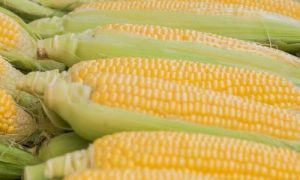Explained: The green revolution in maize

India’s maize production has surged from 11.5 million tonnes in 1999-2000 to over 35 million tonnes in 2023-24. While mostly used as animal feed, maize’s role in ethanol production is growing. The Indian Agricultural Research Institute (IARI) has developed a waxy maize hybrid with high amylopectin starch, enhancing ethanol yield from 390 to 415-420 liters per tonne. This new hybrid, with a potential yield of 8.8 tonnes per hectare, is pending commercial release.
The Green Revolution was largely about wheat and rice. India became self-sufficient, if not surplus, in these two cereal grains, thanks to high-yielding varieties bred by institutions such as the Mexico-based CIMMYT (International Maize and Wheat Improvement Center) and the Indian Agricultural Research Institute (IARI) in New Delhi, under the leadership of scientists like Norman Borlaug and M S Swaminathan.
There is, however, another less celebrated revolution that has taken place in India — in maize. Between 1999-2000 and 2023-24, its annual output has more than tripled, from 11.5 to over 35 million tonnes (mt), with average per-hectare yields also rising from 1.8 to 3.3 tonnes.
Maize, unlike rice and wheat, isn’t much of a food grain. Hardly a fifth of India’s maize production is used for direct human consumption. An estimated 60% goes as feed for poultry birds and livestock. Such maize is indirectly consumed as food by households – in the form of chicken, egg or milk.
The chicken that one eats is basically “maize with wings”. A market-ready broiler bird weighing 2-2.5 kg consumes some 4 kg of feed during its rearing cycle of 40-42 days, from a 35-40 gm day-old chick. Broiler feed itself contains 55-65% maize by weight, with these at 50-60% for egg-layer feed, and 15-20% in cattle feed. Maize supplies carbohydrates, the principal energy source for poultry and livestock. Other feed ingredients include protein sources (soyabean meal and other oilseed cakes), mineral and vitamin supplements, and additives.
Food and feed apart, 14-15% of India’s maize utilisation is for industrial purposes. Maize grains have 68-72% starch, and 1-3% of other simple carbohydrates (sucrose, glucose and fructose). Starch has applications in the textile, paper, pharmaceutical, food and beverage industries.
More recent is maize emerging as a feedstock for ethanol that is used for blending with petrol. Distilleries run on sugarcane molasses and juice/syrup during the crushing season (November-April). In the off-season (May-October), when cane isn’t available, they use grains. That, until recently, was mainly surplus rice from the Food Corporation of India. But with the government stopping its supplies on concerns over depleting stocks and “food security”, the focus has shifted to maize.
That’s where the role of research comes in. IARI has bred India’s first “waxy” maize hybrid with high amylopectin starch content, making it better suited for ethanol production. The starch in maize is a mixture of two polymers, comprising glucose molecules bonded together in a straight chain (amylose) and in branched form (amylopectin).
Normal maize starch has 30% amylose and 70% amylopectin. The starch from IARI’s waxy maize hybrid (AQWH-4) has 93.9% amylopectin. Amylose starch imparts hardness in the grain, while amylopectin causes softness. That, in turn, affects starch recovery and fermentation rates. Normal maize grains have 68-72% starch, but only 58-62% is recoverable. The grains from the new Pusa Waxy Maize Hybrid-1, as it is proposed to be called, have 71-72% starch with 68-70% recovery.
“Softness ensures better grinding of the grains fed into the mill for making flour. Granules with higher amylopectin are also easily accessible by alpha-amylase, the enzyme that hydrolyses or breaks down the starch into smaller glucose units. The glucose is, then, fermented into ethanol using yeast,” Firoz Hossain, principal scientist at IARI, said.
The IARI-developed hybrid, having an average grain yield of 7.3 tonnes per hectare and potential of 8.8 tonnes, has been identified for release under the All-India Coordinated Research Project on Maize. “We’ll soon be going to the Central Variety Release Committee. Once they approve, the hybrid will be officially released and notified (for commercial cultivation),” Hossain said.
IARI has signed a memorandum of understanding with the Uttar Pradesh Distillers’ Association for field trials of its waxy maize hybrid. “We get roughly 390 litres of ethanol from one tonne of normal maize grain. The higher recoverable starch from waxy maize should take that to 415-420 litres,” S K Shukla, business head at India Glycols Ltd’s distillery in Gorakhpur, said. The company is promoting the cultivation of improved maize hybrids for ethanol production by farmers in eastern UP’s Gorakhpur, Maharajganj Sant Kabir Nagar and Basti districts.
















